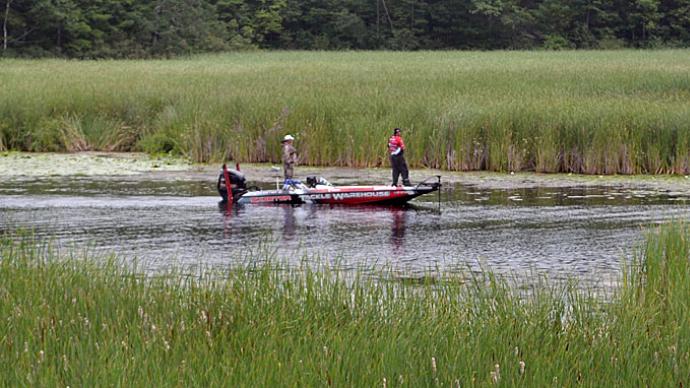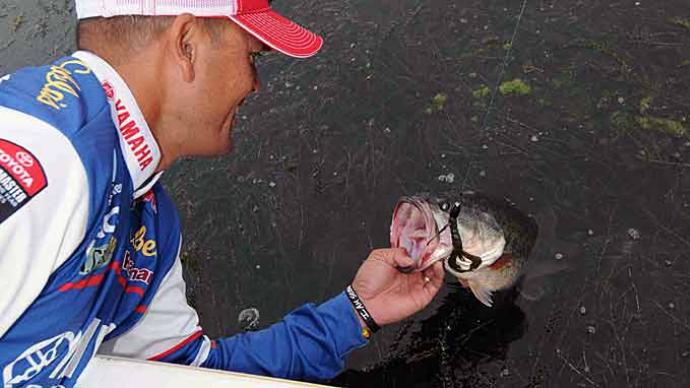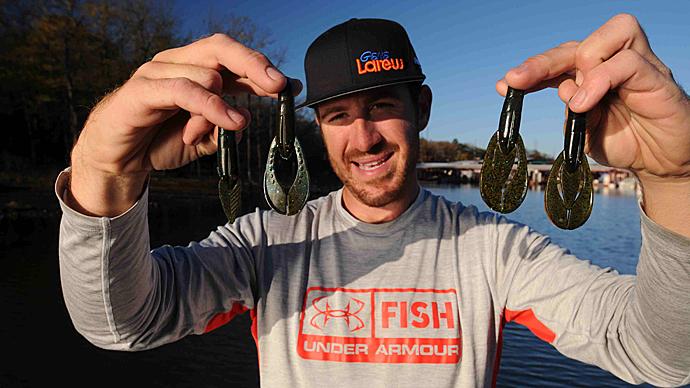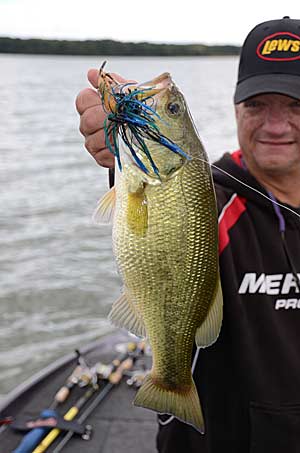
I'm a bass fisherman at heart, and there are a few diverse ways to catch bass that get me pumped. Deepwater crankbait fishing is one tactic that I like. Make a long cast, crank your crankbait down and work it across the bottom, waiting for the rod to load up. I would also add fishing a tube during the Spring months into this mix, but I think the one tactic that I look forward to the most is pitching a bait into the thick cover.
There is no better way to catch bass than to take your bait and drop it or pitch it into an opening in the cover next to the boat, feel that thump, and start to see your line move away. Your reaction is to drop the rod tip and give the reel a few turns as you rear back to set the hook. Immediately the rod doubles over as you hang on and get a few more turns of the reel and get the bass coming your way and up out of the cover. All of it's happening in a few seconds or less. That's a snapshot of short-line pitching into thick cover and getting the bass out and into the boat.
Let’s take the time to break down Pitching Go-Tos. What you will need to go into battle with big bass buried deep in think cover, and the tactics that are needed to get them up out of the cover.
Pitching started as a follow-up to Dee Thomas's flipping technique. When flipping, you had to be close to the cover to drop your bait into the places you wanted to fish. Anglers noticed there were more targets to hit, but they would have to get their boat over to that cover to drop their bait into the cover. At that time, a few anglers started to pitch their baits to the cover, which is how the pitching presentation started. Denny Brauer was the first angler to bring this pitching presentation to the forefront in the early days of flipping.
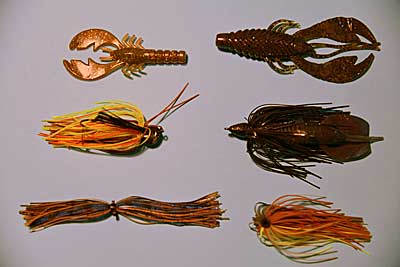
These days, if you want to succeed in your short game, you will need to get good at flipping and pitching presentations. They increase your chances by getting your baits into key spots and targets.
One of the biggest keys behind pitching is that you don't have to get on top of the cover to get your bait into an area that you see. Instead, you can make a pitch from a reasonable distance away. It opens your area coverage and makes you more stealthy as you can sit back and pick the area apart. Of course, anyone can drop a bait into a hole in the weeds if you are on top of it. But there is a knack for pitching a bait into a hole in the cover from 20 to 30 feet away.
Equipment Setup
Let’s set up equipment for what you will need. I use a 7’4” to 7’6” MH to Heavy Denali Lithium Pro baitcaster, teamed with a Lew’s BB-1 Super Duty baitcaster that is spooled with 50lb to 60lb Sunline FX-2 braid or 20lb Sunline Power 2C Fluorocarbon. Some anglers like to use higher weights. You can choose according to the cover you're fishing.
Texas Rig Vs. Jig Presentations
The big question that many guys fight with is, "Should I throw a Texas rig or a jig when flipping and pitching?" The answer usually lies in the cover that I'm fishing. I have both rigged and ready to go on the deck of my boat.
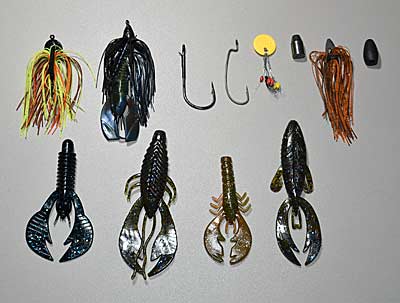
Fishing these through the years, here is my breakdown of what bait to fish in what cover. If I'm fishing an edge, I'll turn more towards a jig as it makes a better presentation in this case. A jig, when it falls, will have more of a horizontal fall on a slack line. It will create a slower fall rate and present a bigger profile. I'll fish a jig if I'm fishing reed edges or thicker cover where the bass target bait in front of them, not bait over their heads.
A Texas-rigged presentation is my choice when bass are buried in cover and waiting for bait to fall from above. Bass look up to be able to rise and meet the bait as it falls. A Texas rig will get through the thicker cover easier and fall faster, triggering more strikes on its way down.
You have a more compact profile that will slip through the cover easier with Texas rigs. Tungsten is also smaller than lead, making it a better choice for getting through smaller openings. You don't have to deal with a weed guard with a Texas rig. It's another thing to think about.
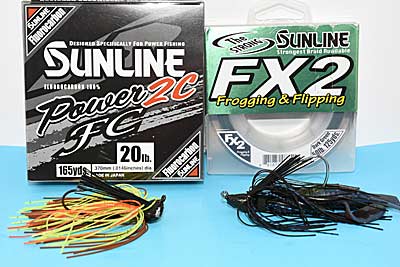
But in truth, let the bass make the final choice as to what you use. I always have both a jig and Texas rig ready to go on my front deck. I had times when the bass favored one bait over the other that day that was not the bait that I thought matched the cover conditions best. So always keep your bait choices open, and let the bass tell you what they want to determine the final choice that you should be using.
Suppose you're trying to pitch your baits in a small opening. Pay attention to the appendages on your plastics. These things will make it harder for you to get your bait through the opening. If your bait has appendages, you may want to pull them off to make your bait more compact to get through the opening better
When using jigs, tip your jigs with either craws or creature baits.
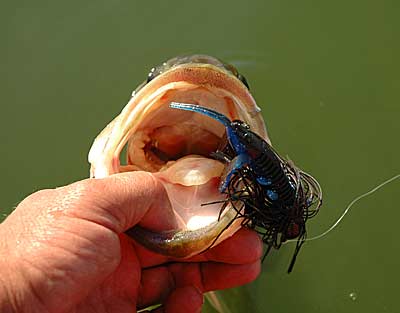
When using Texas-rigged baits, I prefer to use creature baits, and don't forget to add a tube into the mix. Fortunately, tubes don't have any appendages to hang the bait up as it slips in and out of cover easier in most cases.
If you're using a Texas rig, make sure that you peg your sinker, you need to keep the sinker and the bait together as they fall. If the sinker separates from your bait, you won't be able to generate enough power to get a good hookset if the sinker is in one place and the bait is in another. But, again, it's essential when you get above a 1/2oz or more in your weight size.
Stay Stealth And Quiet
The fastest way to turn off bass in close quarters is with your trolling motor. If your prop is making contact with the weeds or the cover, chances are you're entering at one end of the cover, and the bass are exiting the other. To stay stealthy in these conditions, use a push pole. It will allow you to get in and out with little sound. The more commotion you make with your trolling motor or boat noise, the wearier the bass will get. Keep your movements inside the boat to a minimum, and the same goes for your trolling motor as well.
I hope this pitching breakdown helps you put more bass in your boat this year. Once you put a pitching stick in your hands, it's hard to put it down. So keep your bait choices open and see what works best in your waters.
BassResource may receive a portion of revenues if you make a purchase using a link above.


